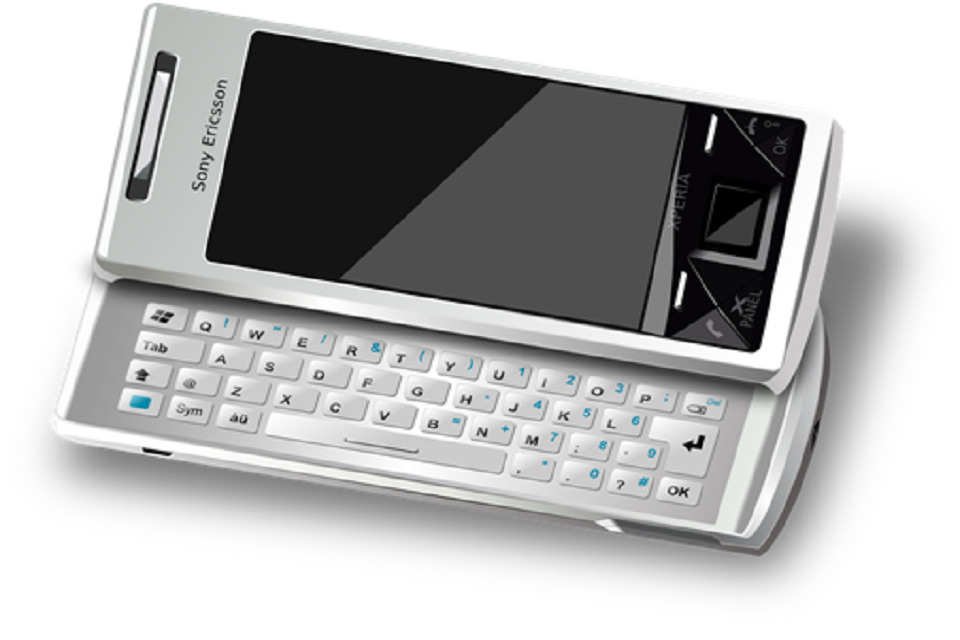Exploring the History of Sony Ericsson as a Company: From Joint Venture to Market Leader

Introduction
Sony Ericsson was a joint venture between the Japanese electronics company Sony Corporation and the Swedish telecommunications company Ericsson. The History of sonyericsson as a company began in 2001 and headquartered in London, UK. The joint venture was established in order to combine Ericsson’s expertise in telecommunications infrastructure with Sony’s expertise in consumer electronics. Sony Ericsson initially focused on developing mobile phones that integrated music and imaging capabilities.
History of sonyericsson as a company
Sony Ericsson was established in 2001 as a joint venture between two global leaders in the electronics and telecommunications industries, Sony Corporation and Ericsson. The two companies recognized that by combining their respective expertise, they could create a powerful force in the rapidly growing mobile phone market.
Sony brought its vast experience in consumer electronics and entertainment, while Ericsson contributed its extensive knowledge of telecommunications infrastructure and network technology. The initial focus of the joint venture was to develop mobile phones that integrated music and imaging capabilities, as the market was shifting towards a more multimedia-centric approach.
Over the years, Sony Ericsson released several iconic products such as the Walkman series of music phones and the Xperia line of smartphones. The Walkman series of music phones was launched in 2005 and was aimed at providing a portable music experience for users, while the Xperia line of smartphones was launched in 2008 and became an important player in the Android smartphone market.
The History of sonyericsson as a company was a joint venture between Sony and Ericsson which was dissolved in 2011 when Sony Corporation bought out Ericsson’s stake in the company. However, the legacy of Sony Ericsson continues to influence the mobile phone and consumer electronics industries.
Key products
Sony Ericsson developed several key products that helped establish the company as a major player in the mobile phone market. Two of the most notable product lines were the Walkman series of music phones and the Xperia line of smartphones.
The Walkman series of music phones was launched in 2005 and aimed to provide users with a portable music experience that was integrated with their mobile phone. The Walkman phones had dedicated music buttons and an intuitive interface, making it easy for users to navigate their music library. They also had high-quality audio hardware, including the ability to play high-resolution audio files, which made them a popular choice for audiophiles.
The Xperia line of smartphones was launched in 2008 and became an important player in the Android smartphone market. These devices featured advanced features such as high-quality cameras, high-definition displays, and powerful processors. The Xperia phones also had a distinctive design language, with their angular corners and slim profiles, that set them apart from other smartphones.
Both the Walkman and Xperia product lines were successful due to their unique features, intuitive user interfaces, and advanced hardware. They helped establish Sony Ericsson as a company that was capable of innovation and provided consumers with high-quality products that met their needs.
Market competition
The mobile phone market is highly competitive, and Sony Ericsson faced several challenges in establishing itself as a major player in the industry. One of the biggest challenges that the company faced was intense competition from established players such as Nokia and Motorola, as well as newer entrants such as Apple and Samsung.
Sony Ericsson attempted to address these challenges by developing innovative products that offered unique features and capabilities. For example, the Walkman series of music phones was a response to the growing demand for portable music players, and the Xperia line of smartphones was developed to compete with the iPhone and other high-end smartphones.
However, the History of sonyericsson as a company shows the company also faced challenges related to the fragmentation of the mobile phone market. The market was divided into different regions and countries, each with their own unique requirements and preferences. This made it difficult for Sony Ericsson to develop products that could meet the needs of a diverse and fragmented market.
To address this challenge, Sony Ericsson worked to develop products that could be customized to meet the needs of specific regions and countries. For example, the company developed phones with localized software and language support to cater to specific markets.
Despite these efforts, Sony Ericsson struggled to maintain its market share in the face of intense competition. The joint venture was dissolved in 2011, and Sony Corporation took full control of the company’s mobile phone business.
Ownership changes
The History of sonyericsson as a company reports the companies ownership structure underwent several changes over the years. The joint venture was established in 2001, with Sony Corporation and Ericsson each owning 50% of the company.
In 2008, Sony Ericsson faced financial difficulties due to the global economic downturn and increased competition from other mobile phone manufacturers. As a result, the company posted significant losses and began to restructure its operations. In 2011, Sony Corporation announced that it would buy out Ericsson’s stake in the joint venture for $1.47 billion.
The buyout was completed in February 2012, and the company was renamed Sony Mobile Communications. The acquisition gave Sony full control over the mobile phone business, allowing the company to streamline its operations and better integrate its mobile devices with its other consumer electronics products.
Under Sony’s ownership, the mobile phone business continued to face challenges due to intense competition and changing market dynamics. In 2021, Sony announced that it would be winding down its mobile phone business and focusing on other areas of its operations, such as gaming and entertainment. Despite its challenges, the legacy of Sony Ericsson continues to influence the mobile phone and consumer electronics industries.
Current status
Sony Ericsson, now known as Sony Mobile Communications, has had a tumultuous history, facing intense competition and financial difficulties. In 2021, Sony announced that it would be reducing its presence in the smartphone market, ending its Xperia line of smartphones.
The History of sonyericsson as a company reports the decision was made in response to the changing market dynamics and the company’s desire to focus on other areas of its operations, such as gaming and entertainment. Sony has stated that it will continue to support existing Xperia customers with software updates and customer service, but will not be releasing any new Xperia smartphones.
Despite this decision, Sony remains a major player in the consumer electronics industry, with a wide range of products and services, including gaming consoles, televisions, cameras, and audio equipment. The company continues to innovate and develop new technologies, such as its virtual reality headset, the PlayStation VR, and its line of high-end headphones, the Sony WH-1000XM4.
While Sony Ericsson’s legacy in the mobile phone industry is coming to an end, the company’s influence on the consumer electronics market will continue to be felt for years to come.
Legacy
Sony Ericsson’s legacy in the mobile phone market is significant, as the company was a pioneer in the development of several innovative technologies and features that are now standard in modern smartphones. The History of sonyericsson as a company shows one of the company’s most notable contributions was the introduction of the Walkman series of music phones, which revolutionized the way people listened to music on their mobile devices.
In addition to the Walkman series, Sony Ericsson also introduced several other groundbreaking products, such as the Xperia line of smartphones, which were among the first to feature high-resolution displays and powerful cameras. The company also developed several advanced technologies, such as noise-cancellation headphones, waterproofing, and wireless charging, that have since become industry standards.
Sony Ericsson’s focus on design and aesthetics also had a significant impact on the mobile phone market, as the company’s devices were known for their sleek, modern designs and attention to detail. This focus on design has since become a hallmark of many high-end smartphones, with manufacturers competing to create the most stylish and visually appealing devices.
Overall, Sony Ericsson’s legacy is one of innovation and creativity, with the company’s products and technologies having a lasting impact on the mobile phone market and consumer electronics industry as a whole.
Analysis
The history of Sony Ericsson as a company highlights the challenges of operating in a highly competitive and rapidly evolving industry. Despite being a pioneer in several areas, such as music phones and high-resolution displays, Sony Ericsson faced significant financial difficulties due to increased competition and changing market dynamics.
One lesson that can be learned from Sony Ericsson’s history is the importance of staying ahead of the curve in terms of technology and innovation. The mobile phone industry is constantly evolving, and companies that fail to adapt to changing trends risk falling behind their competitors.
Another lesson is the importance of focusing on a clear and distinctive brand identity. Sony Ericsson’s Walkman series of music phones and Xperia line of smartphones were successful in part because they offered unique features and designs that set them apart from other devices on the market.
Finally, the history of Sony Ericsson illustrates the challenges of joint ventures and partnerships, particularly when it comes to decision-making and strategic direction. While joint ventures can be beneficial for pooling resources and expertise, they can also be hindered by competing interests and disagreements.
The history of Sony Ericsson provides valuable insights into the challenges and opportunities of operating in the mobile phone market, as well as the importance of innovation, branding, and effective partnerships.
History of sonyericsson as a company – Future prospects
As Sony scales back its presence in the smartphone market, the company’s focus is shifting towards other areas of its operations, such as gaming, entertainment, and audio equipment. In these areas, Sony is well-positioned to continue innovating and developing new technologies, such as its virtual reality headset and high-end headphones.
In addition, Sony’s strong brand recognition and reputation for quality and innovation give it an advantage in the highly competitive consumer electronics market. By continuing to invest in research and development, and by expanding its product offerings in areas such as smart home technology and streaming services, Sony can remain competitive and maintain its position as a market leader.
However, Sony will need to stay ahead of the curve in terms of technological advancements and consumer preferences, particularly in areas such as artificial intelligence and the Internet of Things. The company will also need to continue focusing on design and aesthetics, as well as cultivating strong partnerships and collaborations to drive innovation and growth. Overall, the History of sonyericsson as a company shows the future prospects in the consumer electronics market remain strong, but will require ongoing innovation, investment, and strategic planning to stay competitive.
FAQs
1. When was Sony Ericsson established, and what was its initial focus?
Sony Ericsson was established in 2001 as a joint venture between Sony and Ericsson. Its initial focus was on developing mobile phones that incorporated Sony’s expertise in music and Ericsson’s strength in telecommunications.
2. What were some of Sony Ericsson’s most successful products?
Sony Ericsson’s most successful products included the Walkman series of music phones, which revolutionized the way people listened to music on their mobile devices, and the Xperia line of smartphones, which featured high-resolution displays and powerful cameras.
3. Why did Sony decide to reduce its presence in the smartphone market?
Sony faced intense competition in the smartphone market, particularly from companies such as Apple and Samsung. To remain profitable, the company decided to focus on other areas of its operations, such as gaming, entertainment, and audio equipment.
4. What lessons can be learned from the History of sonyericsson as a company?
Sony Ericsson’s history highlights the importance of staying ahead of the curve in terms of technology and innovation, as well as the value of a clear and distinctive brand identity. The company’s experiences also underscore the challenges of joint ventures and the importance of effective partnerships and strategic planning.
5. What are Sony’s future prospects in the consumer electronics market?
While Sony has scaled back its presence in the smartphone market, the company remains well-positioned in areas such as gaming, entertainment, and audio equipment. The History of sonyericsson as a company shows the company has invested in research and development and expanding its product offerings, Sony can maintain its position as a market leader in the consumer electronics space.
Total Assignment Help
Incase, you are looking for an opportunity to work from home and earn big money. TotalAssignmenthelp Affiliate program is the best choice for you.
Do visit :https://www.totalassignment.com/affiliate-program for more details
Total Assignment help is an assignment help Online service available in 9 countries. Our local operations span across Australia, US, UK, South east Asia and the Middle East. With extensive experience in academic writing, Total assignment help has a strong track record delivering quality writing at a nominal price that meet the unique needs of students in our local markets.
We have specialized network of highly trained writers, who can provide best possible assignment help solution for all your needs. Next time you are looking for assignment help, make sure to give us a try.
Looking for Assignment Help from Top Experts ?
Get the best Assignment Help from leading experts from the field of academics with assured onetime, 100% plagiarism free and top Quality delivery.


